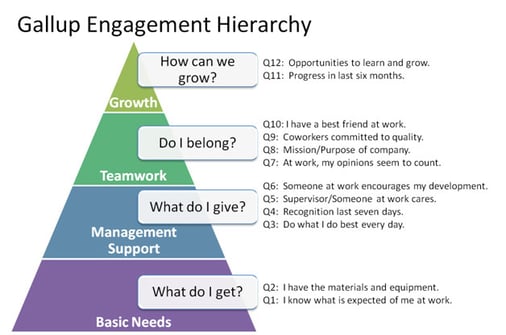 Tuesday a high school class mate of mine decided to have a colonoscopy performed for the second time. I’ve written about Steve before in It Starts With the Right People. He let me know late Tuesday he is still the perfect asshole!
Tuesday a high school class mate of mine decided to have a colonoscopy performed for the second time. I’ve written about Steve before in It Starts With the Right People. He let me know late Tuesday he is still the perfect asshole!
Colonoscopy enables your doctor to examine the lining of your colon (large intestine) for abnormalities by inserting a flexible tube as thick as your finger into your anus and slowly advancing it into the rectum and colon. Your health care provider decides how often you need this test, usually once every 10 years, unless you’re at a higher risk for colon cancer.
If that sounds like it would be uncomfortable, you’re correct it sounds incredibly uncomfortable! Having done it before myself, it’s not the procedure, but the set up that makes the procedure so uncomfortable.
The liquid potions required to drink the evening before is enough to drive you to madness. Most of the evening and night before a colonoscopy is spent sitting on the toilet.
WHAT’S THE PURPOSE?
Please do your research on the effectiveness of a colonoscopy for yourself. Truth is I didn’t find much supporting evidence that unequivocally equates a colonoscopy with preventing cancer,
What I’ve discovered as a business coach for the past 17 years, performing a simple 3 question survey at least once a year, can be surprisingly helpful to discovering where and what to work on in your business to improve employee morale, dedication, performance, and engagement.
We don’t actually call it a Company Colonoscopy. .jpg?width=306&name=Employee%20Survey%203%20Q's%20(Start%2c%20Stop%2c%20Keep).jpg) Employees rarely mind the 3 to 10 question survey, if it’s not too repetitious. The leadership team is guiltier of refusing to implement it.
Employees rarely mind the 3 to 10 question survey, if it’s not too repetitious. The leadership team is guiltier of refusing to implement it.
This may be due to a self-imposed agenda, fear of discovering disturbing truths, asking too often and too much, and an unfound fear of “allowing the inmates to run the asylum.”
WHAT YOU GAIN FROM AN EMPLOYEE SURVEY
In What’s My Daily Measure? Dougy Fresh I shared how one of my customers completed this employee survey, just prior to our annual planning meeting in early November. They finished 2016 dramatically increasing in revenue and profit.
.jpg?width=256&name=Employee%20Survey%205%20Q's%20(Start%2c%20Stop%2c%20Keep%2c%20Too%20Much%2c%20Not%20Enough).jpg) The insights gained from the Employee Survey formed the foundation for 2017 and beyond. Most of the data reflected a remarkable harmonizing viewpoint to what the leadership team anticipated, and felt should be the focus for the coming year.
The insights gained from the Employee Survey formed the foundation for 2017 and beyond. Most of the data reflected a remarkable harmonizing viewpoint to what the leadership team anticipated, and felt should be the focus for the coming year.
Frequently this is not the outcome of these surveys. That it was, shows this company has done a remarkable job, in a very short time getting its People Decision right: The outcome from getting People right in your company is – A Harmonious Culture of Accountability.
In my customers case, they discovered feedback they were well-aware of. The most impactful: employees were working longer hours to get the additional work they’d earned. There was widespread fear of burn-out. In addition, possibly due to the longer hours invested working, many of the staff didn’t feel they were being recognized for their efforts.
This second piece of data was supported by another Employee Engagement Survey the company completed for the second time, Gallup’s Q12. Many of the questions surrounding poor morale are discussed in Who’s Responsible for Low Employee Engagement?
Specifically question number four in the Gallup Q12 asks: In the last seven days, have you received recognition or praise for doing good work?
Responses to this question reflected little or no change from the results completed 12 months earlier.
Yet overall responses to the Q12 had improved. The leadership team, and business had evolved, grown. Numbers for Question #7 At work, do your opinions seem to count? These showed remarkable improvement.
Over the years this Start, Stop, Keep Employee Survey has evolved. It started with three questions, moved five and finally to 10 in 2014.
As your company evolves and responds to the survey it makes sense to evolve and expand it so employees don’t feel like they’re answering the same 3 questions over and over. Yet those first three questions are crucial.
Our 2016 Atlanta Growth Summit was all on getting decision making to the tactical level of your business as effortlessly and as effectively as possible.
Companies that thrive in the near term need to get feedback from the front lines quickly. We’re in a fast-paced social environment. Getting reports, receiving feedback days late or on time can be the difference between growth and survival. In most cases your definition of on time is at the discretion of your customer. They’re not judging you by your industry, they’re judging you by how quickly they get every other product or service they pay for. Instantaneous outcome is a result most of our customers expect today.
KEY TO EMPLOYEE SURVEYS
As valuable as garnering information from your employee is, just gathering responses and feedback isn’t enough. You must tell your employees what they said to you, and then respond in some fashion to address their concerns and show them this effort is worthwhile from the company and the employee perspective.
Failing to share employees feedback, and further diminishing it by failing to demonstrate action on their observations, dooms any effort to continually use this survey as a powerful tool for change.
My customer’s leadership team member shared the results with employees in their Christmas meeting. Then he addressed the most grievous ones with a course of action to demonstrate improvement. Most of these included specific objectives to achieve in 2017.
Taking the time to complete this step is following the corollary of Pearson’s Law: When performance is measured, performance improves, when performance is measured and reported back, performance improves dramatically.
Asking for employee feedback and not doing anything with the results is like putting lipstick on a pig. The issues have been identified, however your company simply decided to ignore them. Don’t think your employees will remember this. Your lack of commitment is on display!
NEXT BLOG: OUT THINK THE COMPETITION
Flying across the United States in November and December provided me time to dive into several books I’ve been wanting to read. One of these books is Outthink the Competition: How a New Generation of Strategists Sees Options Others Ignore by Kaihan Krippendorff. Krippendorff shares historical evidence on how innovation occurs, and why getting stuck in our ways prevents us from seeing the need for change. This is true for sports, business, and politics. Join me next time as we look at how your company can become a magnet for change, systematically developing innovations.






.jpeg?width=150&height=135&name=Hand%20with%20marker%20writing%20the%20question%20Whats%20Next_%20(1).jpeg)

